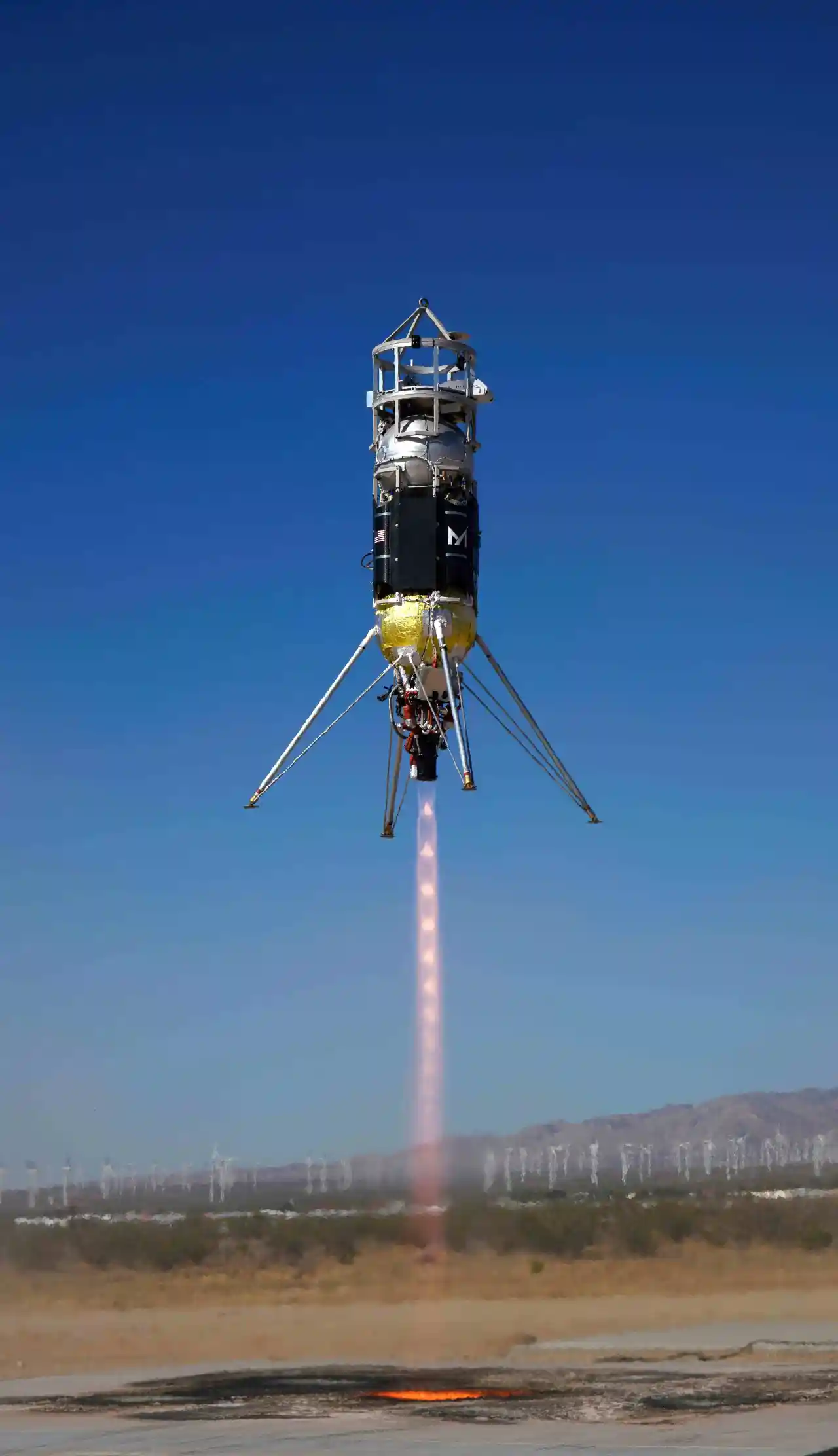Space robotics company Astrobotic announced its Propulsion & Test (P&T) division, formerly Masten Space Systems, has joined NASA’s Flight Opportunities program and Future Engineers in this year’s TechRise Student Challenge, a competition for students in sixth through 12th grade. Astrobotic said it aspires to be a source of inspiration for the next cohort of engineers, perpetuating its objective of democratizing space exploration. Established in 2007 and based in Pittsburgh, the company develops navigation, operation, power, testing and computing systems for spacecraft.
Astrobotic’s array of lunar landers and rovers facilitates the transportation of payloads to the moon on behalf of many entities, including corporations, governmental bodies, academic institutions, nonprofit organizations and private individuals.
The flight for the challenge will take place at Astrobotic’s headquarters in Mojave, California, and will make use of the company’s Lunar Surface Proving Ground (LSPG), a high-fidelity test bed measuring 100 × 100 meters that will simulate the terrain and optical qualities of the moon’s surface. As part of the competition, Astrobotic P&T’s Xodiac, the company’s fifth-generation rocket-powered lander, will fly 30 student payloads. The lander will fly for approximately two minutes at an altitude of 80 feet (approximately 25 meters) over a test field designed to simulate the moon’s surface.
Figure 1 shows Astrobotic’s Xodiac rocket-powered lander taking off from a test pad in Mojave. Through the acquisition of Masten, Astrobotic boasts over 600 successful flight operations across five vertical takeoff and vertical landing (VTVL) vehicles.
Figure 1: Astrobotic’s Xodiac VTVL rocket
Figure 1: Astrobotic’s Xodiac VTVL rocket (Source: Astrobotic)
The use of reusable rockets facilitates the advancement of precision-landing systems, enables the execution of plume-surface–interaction experiments and serves to validate forthcoming space technologies for a diverse range of stakeholders, including NASA, defense entities and commercial clients. The test flights that are carried out serve to mitigate risk and enhance the technological preparedness for future trips to celestial bodies like the moon, Mars and beyond.
The Flight Opportunities program
While NASA is most well-known for its journeys to celestial bodies, such as the moon, Mars and other distant destinations, it also devotes substantial resources to promoting innovation and developing technology in the vicinity of our own planet. To this end, NASA’s Flight Opportunities program encourages academics and entrepreneurs to conduct experiments in the unique space environment, contributing to the development of cutting-edge technologies and concepts.
The NASA Flight Opportunities program was created in 2010 as part of NASA’s overall goal to encourage the development of commercial space capabilities. The program stems from the agency’s realization that many innovative experiments and technologies could benefit tremendously from exposure to microgravity and a near-space environment but lack the funding and resources for dedicated space missions.
In that respect, the program provides access to suborbital and parabolic flight opportunities. These voyages provide researchers with the opportunity to conduct experiments in microgravity at a fraction of the cost of a full-scale space mission. Additionally, these aircraft are significantly more frequent and accessible, allowing more scientists, engineers and businesspeople to participate.
In addition to supporting human missions, the Flight Opportunities program helps deploy CubeSats (see Figure 2), a category of research spacecraft commonly referred to as nanosatellites. CubeSats are built to standardized dimensions, designated “U,” with each side measuring 10 cm. They can vary in size from 1U to 6U and generally weigh less than 1.33 kg (3 lbs.) per U.
The CubeSats developed by NASA are released into space using a deployment mechanism known as the Poly Picosatellite Orbital Deployer (P-POD). These compact satellites can be launched from a variety of platforms, including the International Space Station and suborbital rockets, providing educational and research institutions with cost-effective access to space.
Figure 2: The CubeSat nanosatellite (Source: NASA)
Figure 2: The CubeSat nanosatellite (Source: NASA)
NASA’s Flight Opportunities program has had a strong impact on the advancement of space research and technology. Numerous fields of research, including materials science, biology, physics and Earth science, have been facilitated by this technology. The program has influenced the next generation of scientists, engineers and astronauts by supporting CubeSat missions and STEM Education initiatives.
The TechRise Student Challenge
The NASA TechRise Challenge invites teams of at least four students in sixth to 12th grade to design, construct and launch science and technology experiments on a high-altitude balloon or rocket-powered lander test flight during the 2023–2024 school year.
Even if they have no prior experience, NASA encourages students and their instructors to submit ideas for experiment. The winning teams will also receive technical support during the experiment construction phase from Future Engineers advisors, who will assist students in acquiring the necessary skills to bring their experimental concept to life.
The objective of the challenge is to gain a deeper understanding of space exploration, Earth observation, computing, electronics and the importance of test data by providing participants with hands-on experience with payload design and suborbital flight testing.
Sixty winning teams will be selected to implement their proposed experiment concepts. Winners will receive US$1,500, a 3D-printed flight box to house their experiments and a designated place for their payload on a NASA-sponsored flight test.
Astrobotic said Xodiac offers a valuable approach for commercial clients, government agencies and universities to mature innovations in a testing environment that simulates flight, especially when Xodiac is paired with the LSPG. Xodiac stems from nearly 20 years’ worth of flight testing with VTVL and more than 600 rocket-powered landings.
